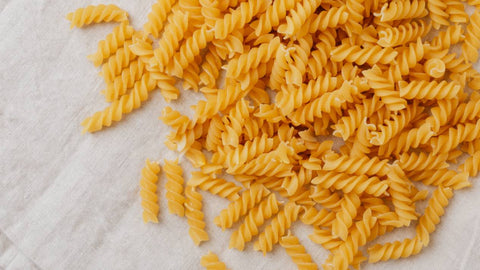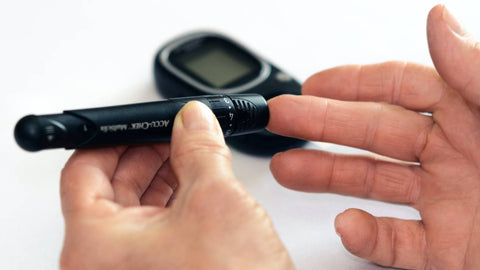As a dietitian that has worked with thousands of clients, one of the most contentious food groups would have to be carbohydrates. Ask anyone what they have tried to do to lose weight and they will most likely say that they have cut back on carbs.
Weight loss is usually achieved using strategies that reduce your intake of calories relative to the amount of energy you burn. Low carbohydrate diets, which involve restricting your carbohydrate intake in favour of increased protein or fat, are a popular weight-loss strategy.
New or fad low carb diets—like the Ketogenic or Paleo diet— seem to cycle in and out of fashion, but are they actually healthy to follow long-term? And are all carbohydrates bad for us? Read on to find out!
What are carbohydrates?
Foods are very broadly classified into four groups
- Protein: These include meat, fish, chicken, eggs, cheese and tofu
- Fat: Nuts, seeds, avocado, oil and butter
- Carbohydrate: Breads, cereals, crackers, rice, pasta and noodles,starchy vegetables such as sweet potato, potato and corn, legumes such as chickpeas and lentils, fruit and fruit juices, milk and yoghurt and sugar and foods with high amounts of added sugar like cakes, biscuits, chocolate, ice-cream
- Free foods: These are all other vegetables not mentioned above such as lettuce, tomato, cucumber, zucchini, eggplant etc.
Carbohydrate foods provide fuel for the body and are broken down into glucose (sugar). This is then absorbed into the blood where it travels to the body’s cells that need energy.
What are the best types of carbohydrates to eat?
Most people will agree that limiting (not entirely avoiding) your intake of highly processed carbohydrate foods such as cakes, chips, instant noodles, many breakfast cereals, soft drinks and confectionery is a good thing to do for your health and waistline.
However, not all carbohydrates were created equal. For example we know that many carbohydrates are highly nutritious foods such as whole-grains, sweet potato, corn and legumes, Greek yoghurt and fresh fruit. Many of these foods are what we call low GI foods.
The Glycaemic Index (GI) is a measure of the effect different carbohydrate foods have on blood sugar levels. It ranks how quickly or slowly carbohydrate foods affect blood glucose levels.
High GI carbohydrate foods are broken down into glucose and absorbed quickly causing the blood sugar level to rise higher and faster.
Low GI carbohydrate foods are broken down into glucose and absorbed more gradually causing a lower and slower rise in blood glucose levels after eating.
|
High GI |
More than 70 |
|
Moderate GI |
Between 55 and 70 |
|
Low GI |
Below 55 |
Here is a table summarising low and high GI foods
|
LOW GI (<55) |
MODERATE GI (56-69) |
HIGH GI (70+) |
|
Breads |
||
|
Whole grain / multigrain bread Low GI bread Soy and linseed bread Pumpernickel bread Sourdough bread / rye |
Wholemeal bread Spelt bread Buckwheat bread Light rye Fruit loaf or raisin bread Pita breads / wraps Crumpets Croissants |
White bread (including high fibre white) Brown bread English muffin (white) Bagels and baguettes Plain scones |
|
Cereals |
||
|
Rolled oats / porridge All Bran Semolina Natural muesli Carman’s Original Fruit Free Muesli Gluten free muesli |
Weetbix Special K Sultana Bran Just Right Nutrigrain |
Rice bubbles Corn flakes Coco Pops Fruit Loops Puffed wheat |
|
Biscuits and Crackers |
||
|
Ryvita Vita-wheat Oatmeal biscuits Muesli bars |
Milk arrowroot biscuits Digestives Jatz |
Water crackers Rice crackers Sao Rice cakes / corn thins Pretzels |
|
Grains and Grain Products |
||
|
Quinoa Buckwheat Muhatma long grain rice Sunrice Low GI rice Wild rice Doongara rice Sushi Rice noodles Wheat pasta Pulse pasta (San Remo and Vetta) Freedom Foods gluten free rice pasta Pearl barley Mackenzie’s Super Blends |
Arborio rice Basmati rice Brown rice Gluten free corn pasta Popcorn |
Long grain rice Jasmine rice |
|
Dairy Products |
||
|
Cow’s milk (regular, light, skim) Soy milk (regular, light, skim) Greek yoghurt Soy yoghurt Custard Almond milk Yakult |
Condensed milk Oat milk |
Rice milk |
|
Fruit |
||
|
Apple Banana Grapes Strawberries Peach (fresh, dried, canned) Apricot (fresh, dried, canned) Orange Mango Pears (fresh, canned) Grapefruit Dried dates Canned pineapple |
Rockmelon Kiwi fruit Cherries Fresh lychees Pineapple Paw paw / papaya |
Watermelon Canned lychees |
|
Vegetables and Legumes |
||
|
Sweet potato Butternut pumpkin Lentils, kidney beans, split peas, chickpeas, baked beans, 4 bean mix Soya beans Mackenzie’s Super Blend Protein |
Broad beans Pumpkin Sweet corn |
White potato Red skinned potato Instant mash potato |
|
Other |
||
|
Honey Agave nectar Maple syrup |
Golden syrup Table sugar |
Rice malt syrup Jelly beans Glucose |
What are the health benefits of eating low GI?
Research has shown that eating a lower GI diet can help with
- Weight management as they improve satiety (feeling of fullness)
- Improving blood cholesterol levels
- Improving blood glucose levels in people with diabetes after meals
- Improving average blood glucose levels (HbA1c)
- Managing high insulin levels in people with insulin resistance or Polycystic Ovarian Syndrome (PCOS) as the slow and steady release of glucose into the bloodstream does not stimulate over production of insulin
Tips to lower the GI
- Acidity will lower the GI of a meal. Add vinegar or lemon juice to meals as a dressing.
- Fibre, particularly soluble fibre, can lower GI. Add psyllium husk to breakfast cereal; add salad vegetables to a sandwich; add lentils to soup; choose high-fibre wholegrain bread and cereal.
- Cooking, then cooling rice or potato. Try in a rice or potato salad.
- Eating protein as part of a meal can lower the GI. Combine fish, lean meat, skinless chicken, egg or tofu with a lower GI carbohydrate food and plenty of low carbohydrate vegetables.
Ideas of low GI food choices
- Choose heavy grain breads such as soy and linseed
- Porridge, All-bran, natural muesli or Weet-bix are good choices at breakfast
- Fruit loaf or raisin bread are a good snack
- Use lower GI varieties of rice such as brown rice, basmati or sun-rice clever rice
- Pasta is also low GI and can be served as part of a meal
- Serve baked beans at breakfast or a light meal
- Add legumes e.g. lentils, beans, chick peas to soups
- Serve sweet potato as a side instead of white potato
- Eat fresh fruit as a snack or on top of breakfast
- Snack on Greek yoghurt
What are low carbohydrate diets?
There are various types of low carbohydrate diets and unfortunately there is no one universal definition for a low carb diet .It is important to distinguish between various carbohydrate restricted diets. Very low carbohydrate diets (VLCD) recommended a maximum of 10% of energy intake from carbohydrate which equates to around 20-60g per day. The most popular diets in this category are the Atkins Diet and the Ketogenic Diet. Other low carbohydrate diets such as the Paleo (or Caveman) diet provide slightly more carbohydrate (about 25-40% energy intake or 60-100g carbohydrate per day).
Are low carb diets superior for weight loss?
The latest research shows that the best diet is one that you can maintain long-term. So if a lower carbohydrate diet is a practice that works for you and you are able to maintain it for as long as it takes to lose excess body fat – and you are meeting your nutritional requirements – then that is ok. The Ketogenic diet however should be reserved for those with Epilepsy as it cuts out numerous food groups we know that are good for our long-term health and protect us from disease. It's important to know that science has not been able to show that ANY diet is successful at keeping weight off long-term.
Are there health benefits to a lower carbohydrate diet?
Lower carbohydrate diets, along with other dietary patterns, have been shown to be effective in lowering blood glucose levels in the short-term, may also reduce body weight and may lead to a reduction in diabetes medications. However, they can restrict core food groups we know are good for our health such as fruit, starchy vegetables and whole-grains, particularly when it comes to gut health. They may also lead to reduced exercise performance as your carbohydrate needs increase with increasing exercise levels, nutrition deficiencies and unwanted side effects such as constipation and tiredness. And lastly they are not recommended for people with eating disorders or a past history of eating disorders, pregnant or lactating women, and people with health conditions such as kidney and liver disease.
If you struggle to prepare your own food or find it hard to stick to a healthy diet, our premade meals can help you reach your goals. Our meals are healthy, and nutritious and will save you both time and money. We also have a low carb menu! View our low carb menu here.
More information
Eatsense
Activate Foods
https://www.activatefoods.com.au/family
Shop 2 / 222 The Entrance Rd, Erina NSW 2250


